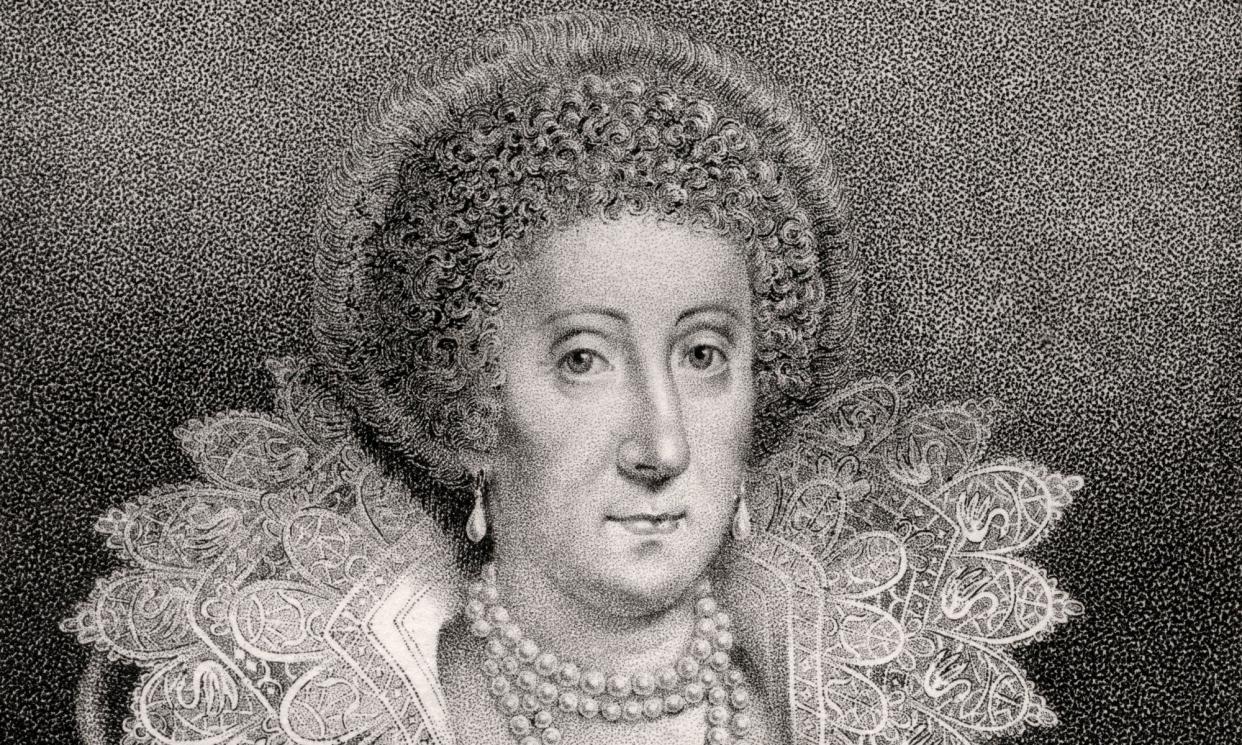Shakespeare’s Sisters by Ramie Targoff review – four women who wrote the Renaissance

Virginia Woolf, in her seminal essay A Room of One’s Own, famously asserted that any hypothetical sister of William Shakespeare would have had her literary gifts thwarted from the outset, thanks to the restrictions on women’s education in the Elizabethan age, not to mention the burdens of motherhood and domestic drudgery.
In the last few decades, the field of feminist literary and historical studies has vastly expanded, holding up to the light those female writers who, despite Woolf’s dismissal, did exist and create in Elizabethan and Jacobean England. Ramie Targoff, professor of English at Brandeis University in Massachusetts, sets out to examine the life and work of four of the most prominent in Shakespeare’s Sisters: Four Women Who Wrote the Renaissance. One is the prolific diarist Anne Clifford, who was certainly known to Woolf because her lover, Vita Sackville-West – a direct descendant of Clifford – had published Anne’s early diaries. Where Woolf regarded Anne as “practical and little educated”, “busied with all the cares of wealth and property”, Sackville-West praised her “sharp, vigorous mind”. In Targoff’s account, Anne – who lived to be 86 – emerges as determined and independent minded, her writing offering a vivid account of her personal battle to assert her rights after she was disinherited from her father’s estate.
Most striking is the way the women had to accommodate a world of male expectations and bend their way around it
Targoff’s other three subjects are equally fascinating. There’s Mary Sidney, sister of the poet Sir Philip and later Countess of Pembroke, whose translations of the Psalms were praised by her male contemporaries, including John Donne; Aemilia Lanyer, daughter of an Italian (possibly Jewish) immigrant musician, whose name may be more familiar since Morgan Lloyd Malcolm’s 2018 hit play Emilia brought her to a new audience; and Elizabeth Cary, a child prodigy who went on to become the author of the first published play by a woman in English, despite having 11 children. These women and their writings are not unknown, but to see their individual and occasionally interwoven stories set out side by side is to understand with greater clarity that, while Woolf was not wrong about the obstacles faced by female writers, she was mistaken about the quality and reception of their work.
Most striking in Targoff’s account is the way the women had to accommodate a world of male expectations and bend their way around it in order to make their voices heard. Mary Sidney used her famous brother as a foil, slipping her own earliest work into print under cover of his name. When Elizabeth Cary was newly married and her husband, Henry, went abroad to fight in the Netherlands, Elizabeth’s mother had someone else write to Henry on his wife’s behalf, lest the evidence of Elizabeth’s ferocious intelligence put him off; Elizabeth’s play, The Tragedy of Mariam, was published with only her initials on the title page, to conceal her identity.
Anne Clifford, only surviving child of the Earl of Cumberland, spent four decades in legal action to recover the estates that her father had bequeathed to his brother and his male heirs, in what Targoff calls “one of the most impressive challenges to patriarchy that England had ever seen”. Though her diaries were not intended for publication, her interest in recording her inner landscape as well as the more ordinary events of her days (“I ate so much cheese that it made me sick”) results in an extraordinarily rich picture of early Jacobean life. When Anne and her husband, the Earl of Dorset, are summoned to see the king about her lawsuit, she declares: “Now I had a new part to play upon the stage of this world.” Only Aemilia published under her own name in her lifetime: “this daughter of an immigrant father and a mother unable to sign her name made English history by becoming the first woman in the 17th century to publish a book of original poetry”.
Unlike Mary Sidney’s work, however, there is no record of how Aemilia’s book, Salve Deus Rex Judaeorum, was received by contemporary writers, and after the first two printings it was not reissued for 360 years. Even then, she was mistakenly identified as Shakespeare’s lover by the academic AL Rowse, who published a volume of her poetry in 1978 titled The Poems of Shakespeare’s Dark Lady, her name obscured and subsumed by a more famous man.
Targoff’s style is lively and accessible; assuming a curious general reader, she offers a succinct overview of the complex political and religious backdrop to these women’s lives. In a personal epilogue, she notes that “it’s rare for anyone without a specialised degree to have heard of any of the women in this book”. Shakespeare’s Sisters is a valuable addition to our understanding not only of women’s writing at the turn of the 17th century, but of their lives. As Targoff concludes: “the more of these voices we can uncover, the richer our own history becomes”.
• Shakespeare’s Sisters: Four Women Who Wrote the Renaissance by Ramie Targoff is published by Riverrun (£25). To support the Guardian and Observer order your copy at guardianbookshop.com. Delivery charges may apply


